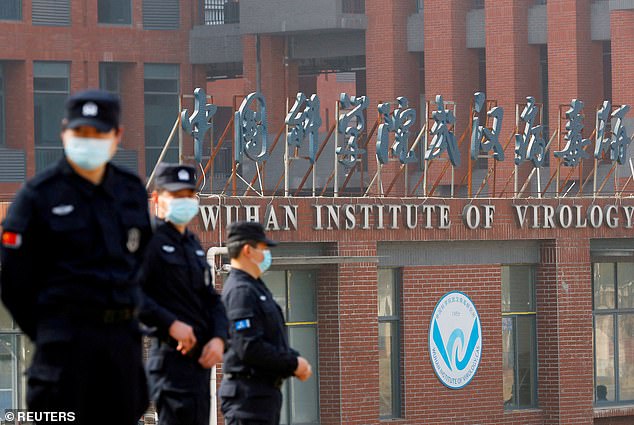Chinese scientists discover EIGHT never-before-seen viruses… and now they plan to experiment with them
Chinese scientists have discovered never-before-seen viruses lurking on a tropical island – and warned they could infect humans.
Researchers tasked with preparing the world for a future pandemic took nearly 700 samples from rodents living in Hainan, just off the southern coast of China.
Eight new viruses – including one belonging to the same family as Covid – were discovered during the project, funded by the Chinese government.
Experts said the discovered pathogens had a “high probability” of infecting humans if they ever crossed the species barrier.
As a result, they called for further experimentation on the viruses to determine exactly what their effects on humans might be.
Shi Zhengli – dubbed the ‘Bat Lady’ or ‘Bat Woman’ for her work on bat coronaviruses – explored the possibility that Covid could have emerged from her laboratory in 2020, according to colleagues. She is also editor of Virologica Sinica
The findings were shared in the journal Virologica Sinicathe publishing house of the Chinese Society for Microbiology (CSM).
CSM is affiliated with the state-affiliated China Association of Science and Technology, which ‘accepts administrative supervision’ from the Chinese government’s ‘Ministry of Civil Affairs’.
Virologica Sinica is also edited by Dr Shi Zhengli, an influential scientist described as China’s ‘bat lady’ who works within the Wuhan Institute of Virology – seen in some corners as the source of the Covid pandemic.
The journal’s editorial board also includes more than a dozen other academics affiliated with the WIV.
MailOnline reported earlier this year how the same magazine controversially claimed that new virus samples from bats in Hainan proved that Covid was not developed in a laboratory.
However, the claim was rejected by independent experts.
The new study analyzed 682 anal and throat swabs collected from various rodents captured on Hainan between 2017 and 2021.
These samples, classified by specific rodent species and location on the island, were then sent to laboratories for testing.
Analysis revealed a large number of new ‘novel’ viruses, including one new coronavirus that the experts called CoV-HMU-1.
CoV-HMU-1 turned out to be a betacoronavirus, a subgenre of coronaviruses that also includes Covid.
The scientists also found several new pathogens in other groups of viruses.
These included two new pestiviruses, linked to yellow fever and dengue, a new astrovirus, a family of viruses that cause infections like stomach bugs, two new parvoviruses, which can cause flu-like symptoms, and two new papillomaviruses, a family of pathogens that can cause genital warts and cancer in humans.
They highlighted the discovery of the new pestiviruses and parvoviruses as particularly important as they were found in the Edwards’ long-tailed giant rat and the Sikkim rat species.
Neither was known to previously harbor such types of pathogens.
Hainan, home to about 9 million people, is isolated from mainland China.
Other such unknown viruses likely exist in similar parts of the world, the scientists added.
“The results advance our knowledge of viral classification and host range and suggest that there are highly diverse, undiscovered viruses that have evolved independently in their unique hosts in inaccessible areas,” they said.
‘If these viruses cross the host barrier, they are likely to cause zoonosis.
‘The pathogenicity and associated impact of these new viruses on humans and animals should be evaluated in further research.’
Rodents carrying potential pathogens pose a huge threat in terms of zoonotic disease, the researchers said.
This is because they are ‘widely distributed’, ‘have diversity in species’ and ‘have strong reproductive potential’.
In addition, they migrate in groups and are concentrated in densely populated, humid and warm places such as central and southern China.

Some experts now say Covid may have originated within the Wuhan Institute of Virology. Security personnel are pictured here standing guard during a WHO visit in 2021
This “provides them with many opportunities to interact with people,” they wrote.
Scientists have repeatedly warned that the next pandemic could come from animals, with climate change, habitat destruction and the sale of live wildlife in so-called ‘wet markets’ all factors increasing the risk.
Covid is originally thought to have come from an animal, most likely a bat.
Although a growing number of experts suspect that experiments conducted in Wuhan caused its spread among humans.
Dr. Zhengli herself once worried that Covid might have leaked from her laboratory, colleagues said.
The so-called ‘lab leak theory’ posits that scientists in Wuhan were experimenting with Covid samples collected from the wild when the virus accidentally leaked, infecting citizens of the city and then the world.
Although the theory has continued to gain traction since the first wave of cases, many scientists argue that Covid most likely emerged naturally and was transmitted from animals to humans.
Such theories have largely pointed to Wuhan’s Huanan wholesale seafood market, where numerous species of live animals were raised and sold, as the potential location where such an infection could have occurred.
In any case, some experts have warned that experiments with high-risk pathogens, often conducted in laboratories in areas with high population densities, could trigger new pandemics.
No concrete evidence has been found to support Covid origin arguments, leading experts to fear that the truth behind the origins of the viruses will never be discovered.
Beyond just establishing a historical fact, experts also want to discover how Covid emerged to help prevent other similar pathogens from becoming pandemics in the future.
